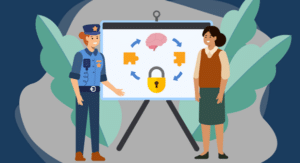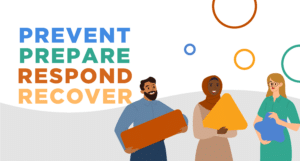Every school needs an emergency response team that can quickly activate the proper response and keep everyone safe throughout an emergency. Whether the incident is an active shooter, gas leak, bomb threat, or a tornado, the staff on your team will be the first ones to respond before law enforcement get on scene.
Below are three tips from K-12 safety experts who spoke with Raptor about how schools can build a robust team.
- Start with Your Mindset
School safety professionals tend to think about physical safety first. Physical safety, like securing the campus and screening visitors, is critical; it’s just as important, though, that schools think beyond that.
As Chris Wilderman, Director of Safe and Sustainable Environments for Adams 12 Five Star Schools in Thornton, Colorado, advises, “You have to go in with the mindset that school safety… is very complex and there are a lot of layers.”
Chris continues, “Active shooter is where we go [when we think about school safety], but there’s way more today that impacts schools.” The COVID-19 pandemic, for example, requires schools to consider mental health procedures, as well as processes for mitigating the virus.
Having this mindset that school safety involves many different aspects can help you think through each threat and hazard your school faces, and ultimately create an emergency response team and emergency operations plan (EOP) that can keep everyone safe.
- Have Multiple Teams
“A lot of [schools] stop with just one team… but you need to think beyond that,” Chris advises. As an example, he shares, “If you do a reunification, you have to have a team that handles the situation at the school and another team to handle the reunification at the off-site location.”
Kevin Burd, a 23-year police veteran and owner of Priority of Life Training and Consulting, also reminds us that some designated team members may be unavailable to assist in the emergency response. This could be because they are out sick for the day or injured in the crisis.
When designating initial and back-up team members, Kevin recommends thinking about who will most likely be available for each position. For example, a teacher will probably be with their students so they may not be the right individual for an Incident Commander or reunification role.
Kevin also recommends schools “look at if [staff] have any kind of specialties or backgrounds, [such as in] military or law enforcement,” as they already understand the command structure of emergency response. Team members can also be pulled from other schools within the district and the district office.
- Practice the Response
Stacy Avila, Adjunct Trainer for The “I Love U Guys” Foundation and 20-year police veteran, recalls what happened during the Sandy Hook tragedy. The two designated individuals “that were to lead the response were unable to do it…We really need to make sure that we’re all fluent in all the jobs that we can do and that we’re practicing,” she advises.
Involving both the original designated team and all back-up members is critical to cross-train and prepare everyone for response. Practicing through drills and exercises helps build muscle memory and helps people become familiar with their roles and responsibilities. It also helps build relationships throughout the team so that everyone can be on the same page and have a better coordinated response in an actual crisis.
In Colorado, lockdown drills are not required, so Chris recommends his schools take an extra 5 minutes during mandatory fire drills to add something that can help them also practice for a lockdown. “If [the school is] not practicing,” Chris claims, the response in actual crisis “will be somewhat of a disaster.”
Chris also recommends schools have impromptu safety conversations with staff. You can ask them questions like “What would you do if smoke filled the hallway right now?” to help them think through different situations and how they would follow the protocols.
Stay Updated on the Latest K-12 Safety Best Practices
To hear more best practices from our nation’s leading K-12 safety experts, check out Raptor webinars and our podcast, School Safety Today. Both feature safety experts and thought leaders on various topics to help schools stay informed on the latest school safety news and recommendations.
To learn more about how the Raptor School Safety Suite can keep your school—and everyone inside of it—safe, contact us today for a personalized demo.





